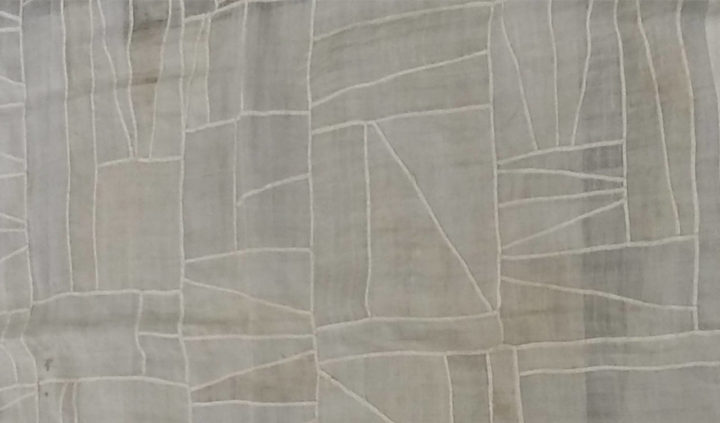Eco Excite Jogakbo

Innovation is a word with thousands of meanings. How can we distil the clutter and find meaningful solutions that successfully portray a sustainable story? Firstly, to counteract the messaging of losing touch or connection with the environment, the story needs to go back to its roots. A solid foundation can be the best engine for creative merit. Secondly, not every innovation lies in the future, as some exemplary case studies are rooted in the past.
Therefore, this Material Monday we venture into the history to discuss the creative up-cycling approach to materials introduced in the Korean Jose dynasty (1392-1910).
The Jose dynasty is recognised for introducing a new system of rules and ethics based on values like morality, modesty, purity and the importance of living in harmony with nature. This further resonated through architecture of the period, which gently blended with the leafy surroundings, while furniture was kept simple and functional, leaving the natural wood grain as the main decorative feature. White became the representative colour of Joseon ceramics, and Joseon people became known for their white overcoats. The element that best encapsulated all of these ideas was the jogakbo.
Jogakbo is the name given to the traditional Korean patchwork; a discipline that expresses Korea’s sense of beauty and material mindfulness. Passed down from generations for six centuries, the craft has been used to reduce waste by turning it into various household items.


It’s widely known that the growing consumerism generates excess waste, particularly in the field of fashion. With this in mind, up-cycling leftover scraps of fabric (or simply waste items) into a new surface is a testament to the jogakbo and the Jose pragmatic lifestyle values continuing to be relevant today.
Textiles can generally be recycled into a range of items. Contemporary jogakbo is applied to the designs of everyday accessories such as bags, pouches, tea ware covers, table runners, and other garment or furnishing fabrics etc. By placing this system at the heart of all values, some brands tell their sustainable stories.
Triarchy Atelier, an LA based clothing brand, found that it takes 2,900 gallons of water to make one pair of traditional cotton jeans. That’s equivalent to 13,184 x 1L water bottles. Assuming that a person should consume 2L of water per day to maintain hydration, this translates to 18 years water supply for 1 person. As a result, the brand takes it’s followers on a journey of saving the most precious resource.
Another LA brand – Reformation –rescues deadstock fabric from fashion houses that over-ordered and repurposes vintage clothing. Their sustainable practice is further supported by their application where a customer can learn how much water and energy is being saved with each purchased design.
Design studio Fabrikr seeks a different outcome. They press rejected straps of denim with epoxy resin, to later combine them with pieces of discarded wood to create contemporary furniture. Here, the various indigo shades and cuts of denim layers evoke bark. Another project, which up-cycles denim is Bahia Denim by Sophie Rowley.
Bottletop is another brand, which translates waste from one industry and up-cycles it. This brand has utilised leather offcuts as well as aluminium can metal ring pulls. The latter was developed into a signature surface aesthetic that makes up the brand’s DNA. As a result, all their products are instantaneously recognisable through their sustainable story of a unique tactile feel.
To conclude, jogakbo as a practice of creative up-cycling, despite being initiated in Korea in 14th century, continues to offer innovative solutions. Being on a journey of exploring sustainable stories we want to share the information we find to make the effort we put into it count. So, if you have any questions or are working on sustainability-lead project, do not hesitate to get in touch and let’s chat materials!
Posted 01 July, 2019 by Katie Kubrak